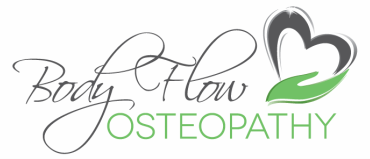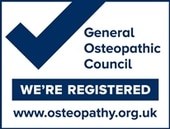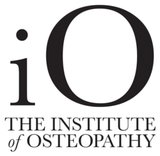Don't let PAIN drive you mad: check out our Driving Ergonimics instead...
It is estimated that a whopping 80% of us will suffer with back pain as some point in our lifes. However, in people who spend a lot of time behind the wheel, back pain and other discomforts such as neck & shoulder tension is very common.
When you have pain, it is important to to take a "whole-of-life" approach to identify the various contributing factors to make sure you get back on your feet quickly and effectively. If you don't have pain but are reading this, remember that prevention is the best cure and you can start implementing simple changes now.
Driving creates significant tension on the upper limbs, neck, upper & low back but there are simple things you can do to minimise discomfort to your body. First, pick a car you comfortably fit in and make sure the seats support you properly. I still remember my 6"3 brother trying to sqeeze himself into my "subcompact" 1992 Ford Festiva: it wasn't easy and certainly didn't look comfortable!
Take these 10 simple steps to a more comfortable ride:
1- Pick a car that is right for you, especially if you already have pain.
Download the " Car selection checklist" PDF below for a few tips if you are looking to change your car.
2- Adjust the seat correctly.
Download the "vehicle ergonomics and best practice guide" PDF below to find out how best to adjust your seat.
3- Empty your back pocket to avoid your bulky wallet causing a twist in your pelvis.
4- If you're driving for long distances, make frequent minor changes to your seat position and change your grip on the wheel occasionally. This
slightly changes the way in which your muscles work and change is a good thing. Stay in a safe supported position throughout.
5- Stop for short breaks and some gentle stretchings at least every two hours and more often if you are already in pain.
6- Despite what you've been taught, the 10- 2 o'clock hand position on the wheel puts more tension in your shoulder than the preferable
9 -3 o'clock position.
7- Do not use your car as an office, use cafes if needed where you can have a better working posture.
8- Don't store items on the back seat or seat back pockets where reaching for them will cause awkward twisting.
9- Take a few minutes to have a stretch and a walk around before you start emptying the boot of your car when you reach your destination.
10-When getting in to the car sit first and then swing your legs into the car. To get out slide the legs out first and then stand up to decrease low
back strain.
Prevention is the best cure however, if you are already experiencing symptoms call your Norwich Osteopath now on 03300 881221 or email us to book your appointment
When you have pain, it is important to to take a "whole-of-life" approach to identify the various contributing factors to make sure you get back on your feet quickly and effectively. If you don't have pain but are reading this, remember that prevention is the best cure and you can start implementing simple changes now.
Driving creates significant tension on the upper limbs, neck, upper & low back but there are simple things you can do to minimise discomfort to your body. First, pick a car you comfortably fit in and make sure the seats support you properly. I still remember my 6"3 brother trying to sqeeze himself into my "subcompact" 1992 Ford Festiva: it wasn't easy and certainly didn't look comfortable!
Take these 10 simple steps to a more comfortable ride:
1- Pick a car that is right for you, especially if you already have pain.
Download the " Car selection checklist" PDF below for a few tips if you are looking to change your car.
2- Adjust the seat correctly.
Download the "vehicle ergonomics and best practice guide" PDF below to find out how best to adjust your seat.
3- Empty your back pocket to avoid your bulky wallet causing a twist in your pelvis.
4- If you're driving for long distances, make frequent minor changes to your seat position and change your grip on the wheel occasionally. This
slightly changes the way in which your muscles work and change is a good thing. Stay in a safe supported position throughout.
5- Stop for short breaks and some gentle stretchings at least every two hours and more often if you are already in pain.
6- Despite what you've been taught, the 10- 2 o'clock hand position on the wheel puts more tension in your shoulder than the preferable
9 -3 o'clock position.
7- Do not use your car as an office, use cafes if needed where you can have a better working posture.
8- Don't store items on the back seat or seat back pockets where reaching for them will cause awkward twisting.
9- Take a few minutes to have a stretch and a walk around before you start emptying the boot of your car when you reach your destination.
10-When getting in to the car sit first and then swing your legs into the car. To get out slide the legs out first and then stand up to decrease low
back strain.
Prevention is the best cure however, if you are already experiencing symptoms call your Norwich Osteopath now on 03300 881221 or email us to book your appointment
|
The following documents from "Driving Ergonimics" provide useful information for drivers.
|
| ||||||||||||
Source: Driving Ergonomics, http://www.drivingergonomics.com/
Disclaimer: Although efforts have been taken to ensure the accuracy of the information in these pages, continuing research is required to establish the effectiveness of the information provided. Body Flow Osteopathy does not therefore guarantee the completeness and correctness of the information provided and will not be held responsible for any errors or omissions.
Disclaimer: Although efforts have been taken to ensure the accuracy of the information in these pages, continuing research is required to establish the effectiveness of the information provided. Body Flow Osteopathy does not therefore guarantee the completeness and correctness of the information provided and will not be held responsible for any errors or omissions.



